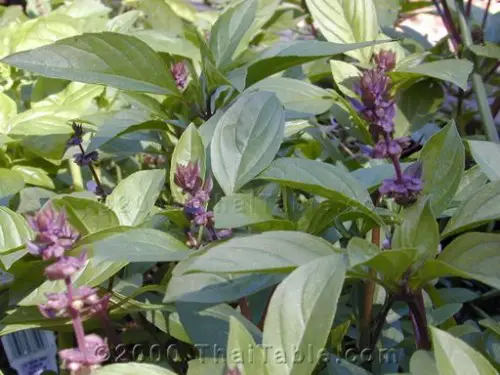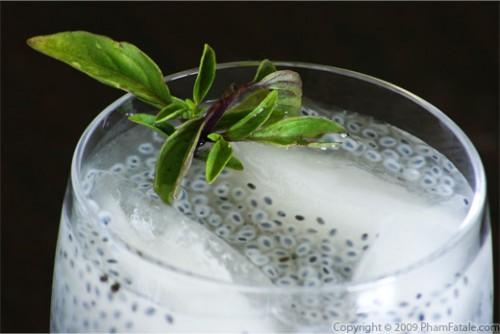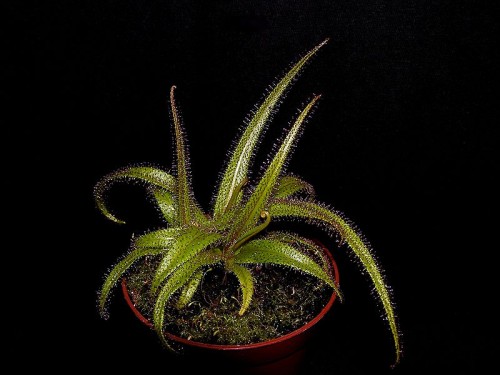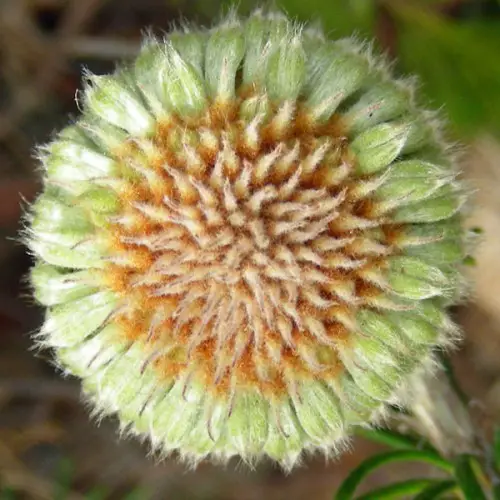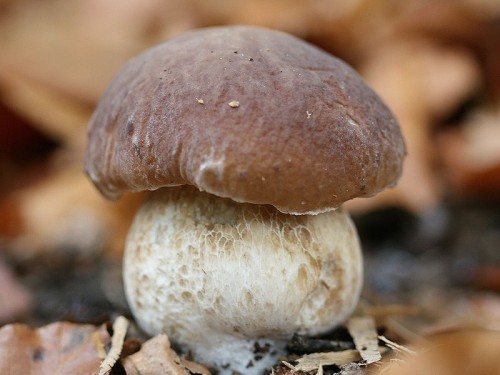Thai Basil
Thai Basil (Oriental basil or Asian basil) or its scientific name, Anise/Licorice Basil, was originally found in the country of Iran, India or other tropical atmosphere in Asia more than 5,000 years ago. Basil comes with varieties of types where each and every one of them has their own unique smell, flavor and health benefits. This Thai Basil is a plant which is sweet with unusual basil flavor and that is why it is commonly use not only in Thai cuisine, but also the Vietnamese and Laotian cuisines.
It has deep green leaves, smaller and not round like the Western sweet basil. It will grow on purplish stems and you can find pretty, reddish purple flower buds on top of it. Both of the leaves and flowers provide sweet fragrance together with a mixture of a distinctly basil scent of anise, licorice and mint flavors. It falls under the cultivar group of basil that has a more assertive taste than any other sweet basils and this type of basil is called the ‘Queen of Siam’ in the United States. The Thai basil or in Thai language it is known as ‘Bai Horapa’, is normally eaten just like vegetable and it is being used in large quantities from its leaves to the sprigs for variety of dishes which include curries, stir-fried dishes, salads and soups.
As for its flowers, the Thai basil forms it flowers in a cluster and not on spike like the common basil. This type of flowers provides an attractive plate decoration or just adds it on to your green salad dressing for a more colorful presentation. Although basil is best grown outdoors, in a greenhouse or row cover within an environment that has strong sunlight and dry condition, it can also be grown indoors by using a pot especially when you place it on an equator-facing windowsill. It is sensitive to cold weather or extremely cold draft.
The Thai basil requires approximately 4 to 6 hours of sunlight a day, and also able to survive in filtered or indirect light. When you harvest the Thai basil, you do not have to remove the single leaves, just pinch-off the top section of a stem and stop just at its intersection where the two leaves emerge. By doing this, the plant will be able to produce new growth branches around the area where you removed the stem.
The herbs can be easily stored by putting a fresh stem in a glass of water outside the refrigerator. Besides that, this basil can also be kept fresh by cutting its end and put it in water, cover it with a plastic bag and stores it in the refrigerator. This method will enable it to stay fresh for as long as one week. In terms of health benefits, the Thai basil provides an excellent source of Vitamin K and produces lots of iron, calcium and also Vitamin A, plus it is also a good source of dietary fiber, manganese, magnesium, Vitamin C and potassium.
